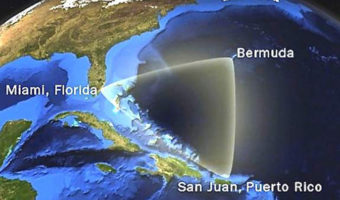There Are Fish Fossils in the Himalayas, but How?
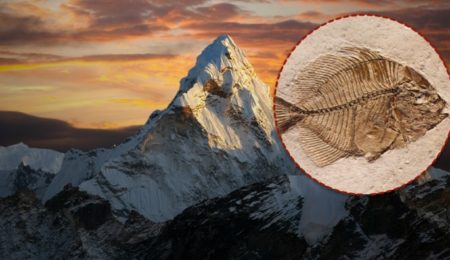
The mighty Himalayas, which literally means “abode of snow” in Sanskrit, is also known as the “roof of the world.” With summits like Mount Everest and K2, the Himalayas have all the fourteen “eight-thousanders†in the world, i.e., mountains with a height of 8,000 meters or more. But would you believe it if someone told you they found a fish fossil in the Himalayas? While this may sound absurd and hard to believe, fish and other marine fossils have actually been found in the Himalayas! But how can fish reach so high in the mountains? Let’s unravel the reason.
Table of Contents
Many believed a great flood brought fish fossils to the Himalayas.
When the mountaineers first found marine fossils during their climb on the Himalayas, wild speculations regarding how the fossil reached so high in the mountains started making rounds. Of all the speculations, the one that spread around like wildfire was the concept of the “Great Flood.” After all, there is a mention of the Great Flood that swallowed the entire world in the first book of the Bible too! So, many started believing that the concept, known as the “Genesis flood narrative,” is true.
However, when many thought a huge flood was the only possible reason fish could reach the world’s highest mountain range, experts suggested otherwise. Soon such speculations were discarded by the geologists. They instead suggested that continental drift, which was also responsible for the creation of the great Himalayas, is the actual reason why there are fish fossils in the Himalayas.
A great collision of landmasses is the real reason why there are fish fossils in the Himalayas.
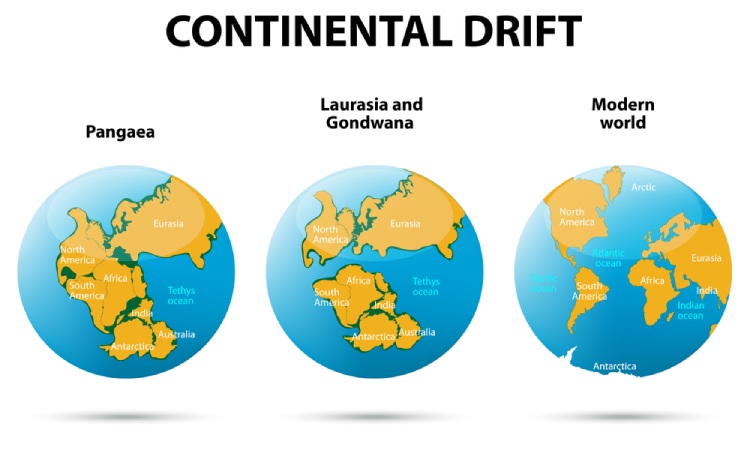
The fish fossils did not reach the Himalayas overnight. It was the result of a geological incident called “continental drift.” The continental drift occurred some 225 million years ago when the world map used to be a lot different than today. India, back then, was part of a supercontinent known as “Gondwana.â€
However, some 200 million years ago, the Indian tectonic plate began to move northward at a speed of 9 to 16 cm per year after breaking away from Gondwana. Some 50 million years ago, the Indian landmass eventually collided with the Eurasian continent after traveling a distance of around 6,400 km.
The collision resulted in the scraping off of the Indian margin of the seabed onto the Eurasian continent as an accretion. The accretion started uplifting a mountain range at the adjacent area of the Indian and Eurasian landmass, which we today know as the Himalayas.
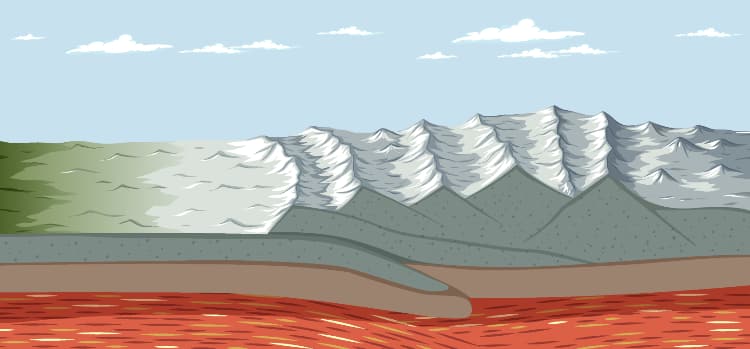
So, the mountain range, which resulted from the collision of the landmasses, was mostly a steeply uplifted seabed. A seabed is, naturally, home to marine creatures. Therefore, during the prolonged collision, many of the fossilized creatures on the seabed reached the top of the mountains. The same fossils were discovered by the mountaineers during their expedition in the Himalayas. It explains, despite sounding unreal, how the fish fossils were found so high on the Himalayan Mountain Range.
The marine fossils found in the Himalayas are hundreds of millions of years old.

Some of the very first fossils in the Himalayas were collected during a 1924 Mount Everest expedition. The expedition failed, and George Mallory and Andrew Irvine, two of the mountaineers, perished while trying to summit Everest. However, Noel Eward Odell, another group member, managed to survive and returned back with some limestone samples.
Years later, Edmund Hilary and Tenzing Norgay, the first people to summit Everest, also collected similar limestone samples. The limestones are sedimentary rocks that form from organic debris, like fishes, corals, bones, shells, etc., in warm waters.
The fossils discovered by these mountaineers are from the Ordovician Period, which ended some 440 million years ago. It means these fossils are even older than the first human beings who walked the Earth around two million years ago!
Check out these fascinating facts about the Himalayas, as captivating as the fish fossils found there.
1 There is a lake full of skeletons in the Himalayas.
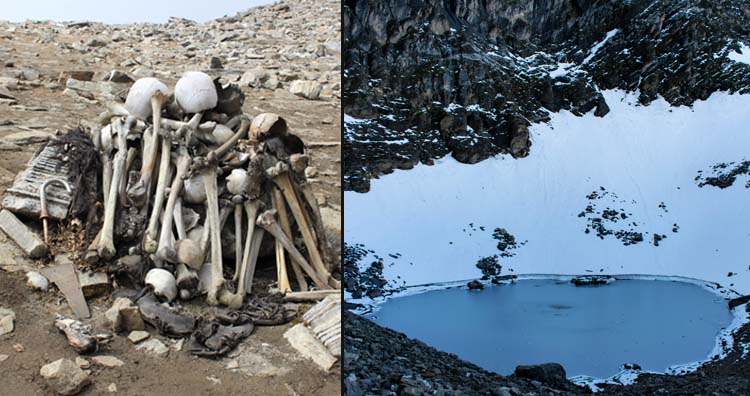
Roopkund, or the “lake of skeletons,†is a Himalayan glacial lake that is full of hundreds of human skeletons! The lake, which remains frozen for most of the year, is situated at 5,000 meters above sea level. Whenever the lake melts, the remains of around 600 to 800 people are visible in and around the lake.
Scientists and anthropologists have been studying the human remains at Roopkund for more than decades. Earlier studies suggest that the people who died there were bigger than normal human beings. Most of these were healthy adults aged around 35 to 40 and some elderly women, but no children. However, no one has yet figured out who these people were, where they came from, and how and when they died.
2 A species of Himalayan honeybee makes a hallucinogenic honey.

Apis laboriosa is a species of honeybees in the Himalayas that make hallucinogenic honey. The bees, which also happen to be one of the largest of the honeybees, are considered a major pollinator of the high-altitude Himalayan vegetation. The native Gurung tribe in the area scales great heights to collect the so-called “mad honey†of these bees.
The honey of the giant Himalayan honeybees, when consumed in small portions, causes euphoria and lightheadedness. It is also believed to have several medicinal properties, including improving joint and cholesterol problems. However, the honey contains a chemical called grayanotoxin, a neurotoxin found in many Himalayan flowers. Therefore, the honey can affect the human nervous system and can even lead to poisoning.
3 The highest peak of the Himalayas, Mount Everest, is still growing!
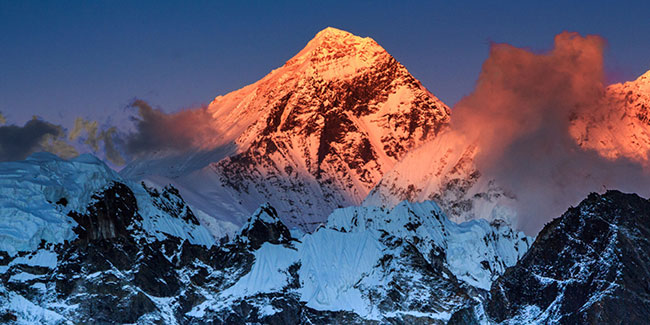
Mount Everest, the highest summit in the world, continues to grow even after millions of years since it was formed. The tectonic plate movement that created the entire Himalayan Mountain Range is still happening at almost an unnoticeable pace. That means India is still creeping north by around 5 cm (2 inches) every year. It adds around 0.4 mm (0.16 inches) to Everest’s height every year. In some parts of the Himalayan ranges, the growth is even more, with around 10 mm (0.4 inches) per year. As measured officially in December 2020, the last recorded height of mount Everest is 8,848.86 meters.
















